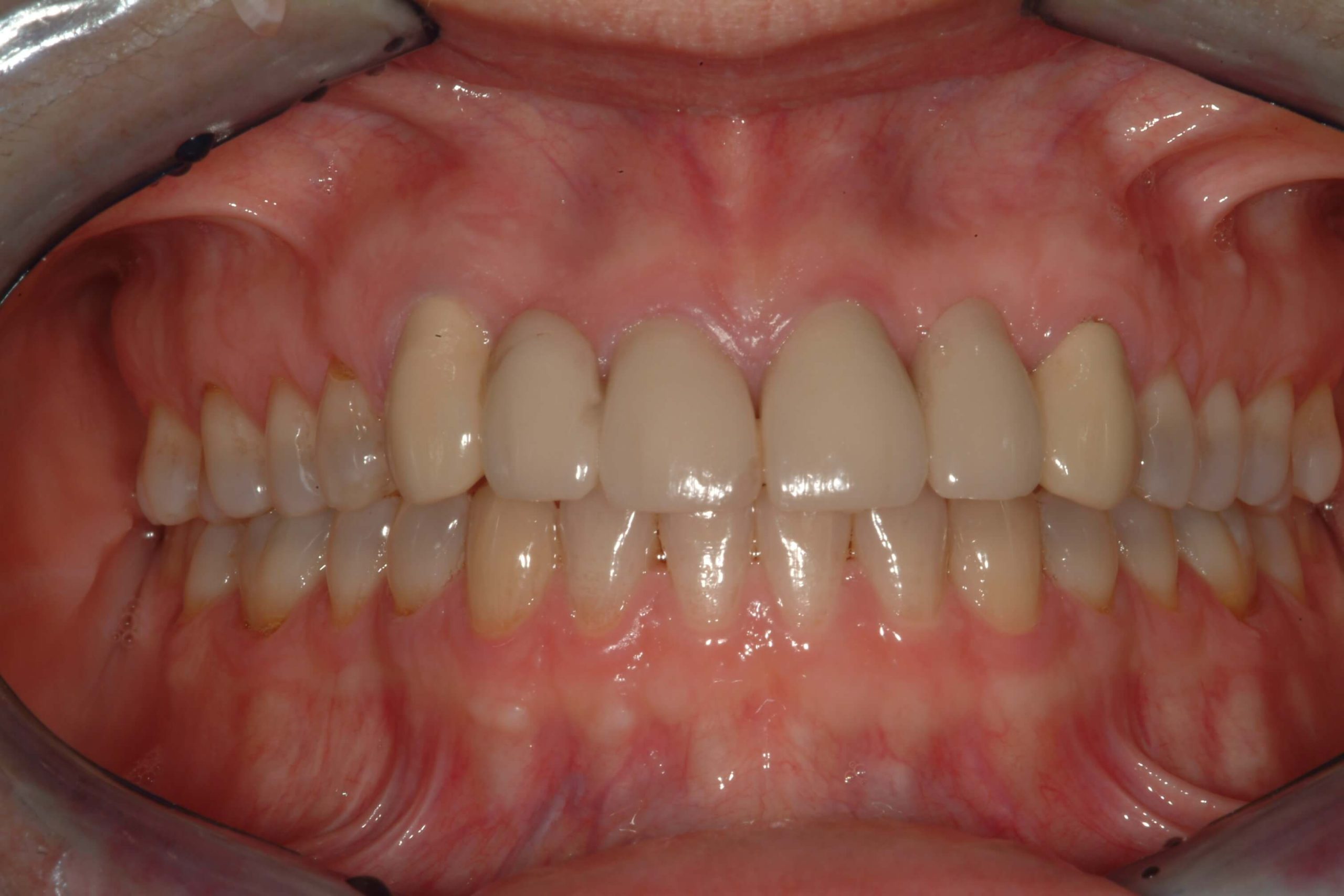
Fixing the Failed Restoration: Exam & Evaluation
A comprehensive exam is the first step in a long line of decisions that can end in case success or failure. For this case, my patient presented with a litany of problems and dental concerns.
Failed Restoration: Patient History
When I first encountered the patient, she had a six unit anterior bridge with temporary cement. She came to my practice because she was unhappy with how her dental work looked and was interested in a permanent restoration that would truly suit her goals.
She had a checkered dental history beginning with orthodontic treatment for a diastema between the maxillary centrals and a left maxillary lateral that fractured down to the root and had to be removed. After a FPD was placed for the tooth removal, her diastema reopened and the right maxillary was also lost to fracture.
That wasn’t even it for the patient’s woes. She was given a bridge that made her very unhappy and also had to have endodontic therapy on the upper right canine. Despite multiple placements, the restoration was never to her liking.
Esthetically, the patient wanted to remedy her uneven gingival margin, the length of the upper right canine, the relative size of laterals and centrals, and the color match. The latter was difficult to remedy because of tetracycline staining from her childhood. Finally, she was also displeased with the thick feeling of the bridge.
All of this together painted a picture of a patient in need of serious help.
Failed Restoration: Evaluation & Exam
My esthetic evaluation confirmed many of her concerns. I completed it intraorally and with diagnostic photographs. The patient presented with tooth proportion asymmetries, inadequate tooth display at rest on one central, an uneven incisal plane, and gingival discrepancies.
Her comprehensive exam revealed normal TMD joints, but also showed posterior wear. She had muscle pain and headaches yet no muscle tenderness. I put her on six weeks of appliance therapy, which led to the discovery that she had a habit of ‘power wiggling.’ I was then able to obtain an accurate centric relation bite record.
I removed the anterior bridge for radiography of the abutments. It became clear that her maxillary right canine had a lot of decay and inadequate ferrule.
To be continued…
Related Course
E3: Restorative Integration of Form & Function
DATE: April 12 2026 @ 8:00 am - April 16 2026 @ 2:30 pmLocation: The Pankey Institute
CE HOURS: 41
Dentist Tuition: $ 7500
Single Occupancy with Ensuite Private Bath (per night): $ 355
Understanding that “form follows function” is critical for knowing how to blend what looks good with what predictably functions well. E3 is the phase of your Essentials journey in which…
Learn More>






